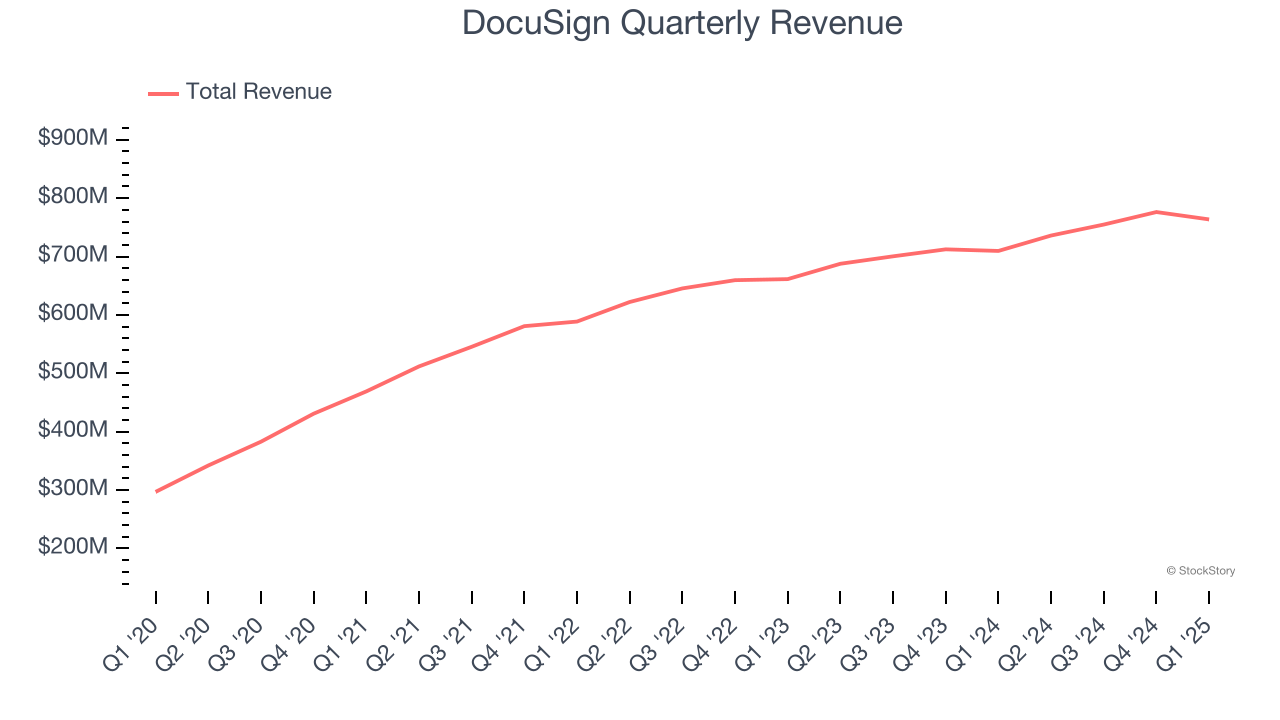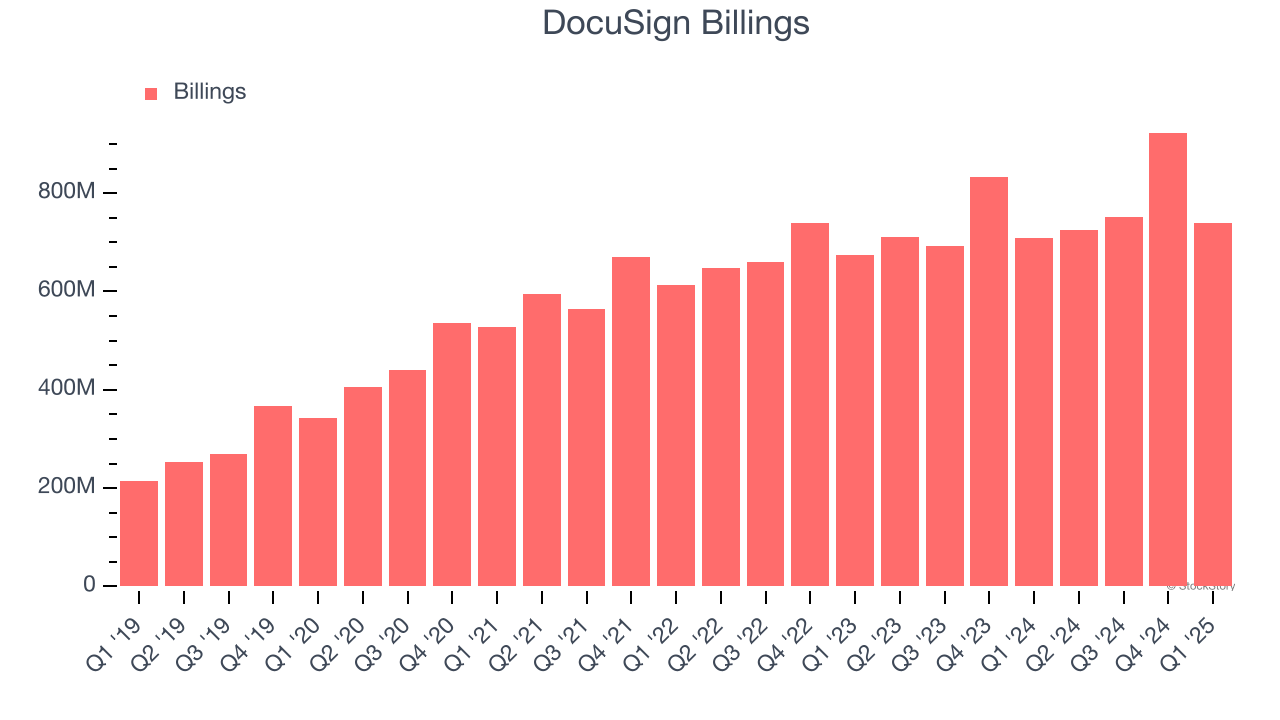
E-signature company DocuSign (DOCU) reported revenue ahead of Wall Street’s expectations in Q1 CY2025, with sales up 7.6% year on year to $763.7 million. Guidance for next quarter’s revenue was better than expected at $779 million at the midpoint, 0.7% above analysts’ estimates. Its non-GAAP profit of $0.90 per share was 10.5% above analysts’ consensus estimates.
Is now the time to buy DocuSign? Find out by accessing our full research report, it’s free.
DocuSign (DOCU) Q1 CY2025 Highlights:
- Revenue: $763.7 million vs analyst estimates of $748.1 million (7.6% year-on-year growth, 2.1% beat)
- Adjusted EPS: $0.90 vs analyst estimates of $0.81 (10.5% beat)
- Adjusted Operating Income: $225 million vs analyst estimates of $207 million (29.5% margin, 8.7% beat)
- The company's billings guidance for next quarter and the full year both missed expectations
- Operating Margin: 7.9%, up from 3.2% in the same quarter last year
- Free Cash Flow Margin: 29.8%, down from 36% in the previous quarter
- Billings: $739.6 million at quarter end, up 4.2% year on year
- Market Capitalization: $19 billion
"Q1 was an important quarter for Docusign's long-term transformation as we delivered on an ambitious product roadmap and surpassed 10,000 Intelligent Agreement Management customers," said Allan Thygesen, CEO of Docusign.
Company Overview
Founded by Seattle-based entrepreneur Tom Gonser, DocuSign (NASDAQ: DOCU) is the pioneer of e-signature and offers software as a service that allows people and organisations to sign legally binding documents electronically.
Sales Growth
Examining a company’s long-term performance can provide clues about its quality. Even a bad business can shine for one or two quarters, but a top-tier one grows for years. Over the last three years, DocuSign grew its sales at a 10.8% compounded annual growth rate. Although this growth is acceptable on an absolute basis, it fell short of our standards for the software sector, which enjoys a number of secular tailwinds.

This quarter, DocuSign reported year-on-year revenue growth of 7.6%, and its $763.7 million of revenue exceeded Wall Street’s estimates by 2.1%. Company management is currently guiding for a 5.8% year-on-year increase in sales next quarter.
Looking further ahead, sell-side analysts expect revenue to grow 5% over the next 12 months, a deceleration versus the last three years. This projection is underwhelming and suggests its products and services will see some demand headwinds.
Software is eating the world and there is virtually no industry left that has been untouched by it. That drives increasing demand for tools helping software developers do their jobs, whether it be monitoring critical cloud infrastructure, integrating audio and video functionality, or ensuring smooth content streaming. Click here to access a free report on our 3 favorite stocks to play this generational megatrend.
Billings
Billings is a non-GAAP metric that is often called “cash revenue” because it shows how much money the company has collected from customers in a certain period. This is different from revenue, which must be recognized in pieces over the length of a contract.
DocuSign’s billings came in at $739.6 million in Q1, and over the last four quarters, its growth was underwhelming as it averaged 6.4% year-on-year increases. This performance mirrored its total sales and suggests that increasing competition is causing challenges in acquiring/retaining customers. 
Customer Acquisition Efficiency
The customer acquisition cost (CAC) payback period represents the months required to recover the cost of acquiring a new customer. Essentially, it’s the break-even point for sales and marketing investments. A shorter CAC payback period is ideal, as it implies better returns on investment and business scalability.
DocuSign is extremely efficient at acquiring new customers, and its CAC payback period checked in at 14.8 months this quarter. The company’s rapid recovery of its customer acquisition costs means it can attempt to spur growth by increasing its sales and marketing investments.
Key Takeaways from DocuSign’s Q1 Results
It was encouraging to see DocuSign beat analysts’ revenue expectations this quarter. We were also glad its revenue guidance for next quarter slightly exceeded Wall Street’s estimates. On the other hand, its billings slightly missed and guidance for next quarter and full-year billings also fell short. This is weighing on shares. The stock traded down 12.4% to $81.50 immediately following the results.
So do we think DocuSign is an attractive buy at the current price? We think that the latest quarter is only one piece of the longer-term business quality puzzle. Quality, when combined with valuation, can help determine if the stock is a buy. We cover that in our actionable full research report which you can read here, it’s free.






